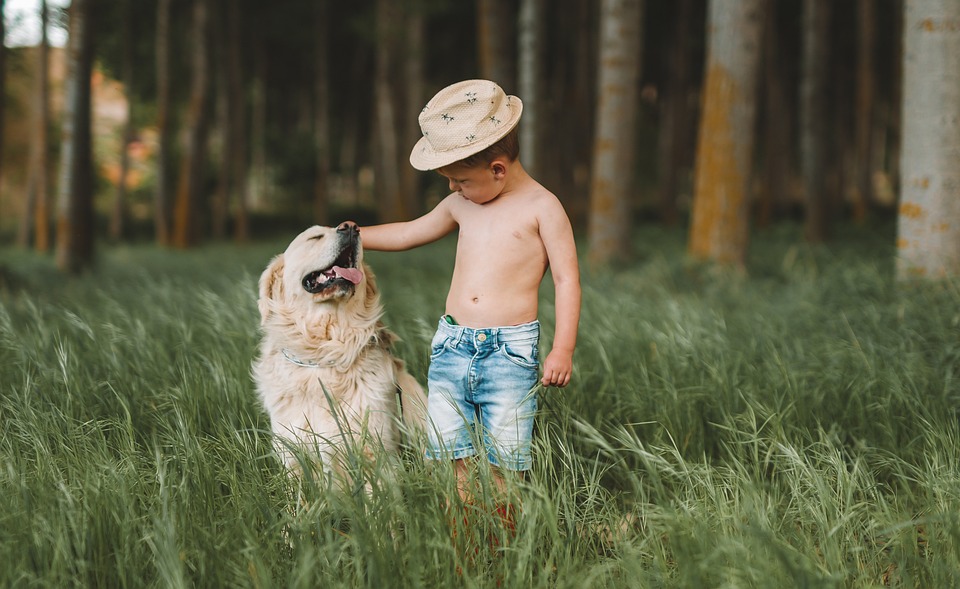Welcoming a new baby into your household is an exciting and joyous occasion. However, it can also be a significant adjustment for your furry family members, especially dogs who may struggle to adapt to the changes. To ensure a smooth transition and foster a harmonious coexistence between your dog and the new bundle of joy, here are some valuable tips and insights:
Understanding Dog Behavior and Preparation
Before the baby arrives, it’s crucial to comprehend your dog’s behavior and make necessary preparations. Dogs are social creatures and thrive on routine, structure, and positive reinforcement. Here are some steps to take:
1. Establish a Consistent Routine: Dogs find comfort in a consistent routine. Try to maintain their feeding, exercise, and playtime schedule as much as possible. Gradually introduce any necessary changes to align with the baby’s routine.
2. Encourage Positive Associations: Create positive associations with baby-related items, such as the crib, stroller, and toys. Allow your dog to explore these items under supervision, reward calm behavior, and provide treats or praise.
3. Expose Your Dog to Baby Sounds: Help your dog become familiar with the sounds associated with a newborn. Play recordings of baby noises at a low volume, gradually increasing the volume over time. Reward your dog for remaining calm and relaxed during these sessions.
4. Practice Obedience Training: Reinforce basic commands and ensure your dog responds reliably. Commands such as “sit,” “stay,” and “leave it” become especially important when managing interactions between your dog and the baby.
Introducing Your Dog to the Baby
The initial introduction between your dog and the baby is crucial for establishing a positive relationship. Follow these guidelines to create a safe and comfortable environment for both:
1. Gradual Introduction: Allow your dog to sniff and explore the baby’s scent on blankets or clothing before the face-to-face introduction. This helps familiarize your dog with the baby’s scent, making the actual meeting less overwhelming.
2. Controlled On-leash Meetings: Initially, keep your dog on a leash during introductions. Monitor their behavior closely and reward calm, gentle interactions. If your dog becomes anxious or shows signs of aggression, seek professional help from a certified dog trainer or behaviorist.
3. Supervised Visits: Always supervise interactions between your dog and the baby. Gradually increase the time they spend together, ensuring your dog remains calm and gentle. Reward and praise your dog for appropriate behavior.
4. Boundaries and Personal Space: Establish boundaries around the baby’s sleeping and feeding areas. Use baby gates or closed doors to create a designated space where your dog is not allowed. This helps your dog understand and respect the baby’s personal space.
Common FAQs about Dogs and Newborns
Q: Will my dog become jealous of the new baby?
A: Dogs may experience some level of jealousy initially, as they are accustomed to being the center of attention. By maintaining a consistent routine, providing ample positive reinforcement, and involving your dog in baby-related activities, you can minimize feelings of jealousy and help them adjust to the new family dynamic.
Q: How can I prevent my dog from jumping on the baby?
A: Teaching your dog the “off” command is essential to prevent jumping. Practice this command consistently and reward your dog for complying. Additionally, provide your dog with alternative ways to release energy, such as regular exercise and mental stimulation, to reduce the likelihood of exuberant jumping.
Q: Can I leave my dog alone with the baby?
A: It is never advisable to leave your dog alone with a baby or any young child, regardless of their temperament. Supervision is crucial to ensure the safety of both your dog and the baby. Always prioritize the well-being of everyone involved.
Q: What if my dog shows signs of aggression towards the baby?
A: If your dog displays any signs of aggression, such as growling, snapping, or biting, consult a professional dog trainer or behaviorist immediately. They can assess the situation, provide tailored guidance, and implement behavior modification techniques to address the aggression effectively.
Remember, each dog is unique, and the adjustment period may vary. Patience, consistency, and positive reinforcement are key when helping your dog adapt to the presence of a new baby. By following these guidelines and seeking professional help when needed, you can create a harmonious and loving environment for all members of your growing family.









